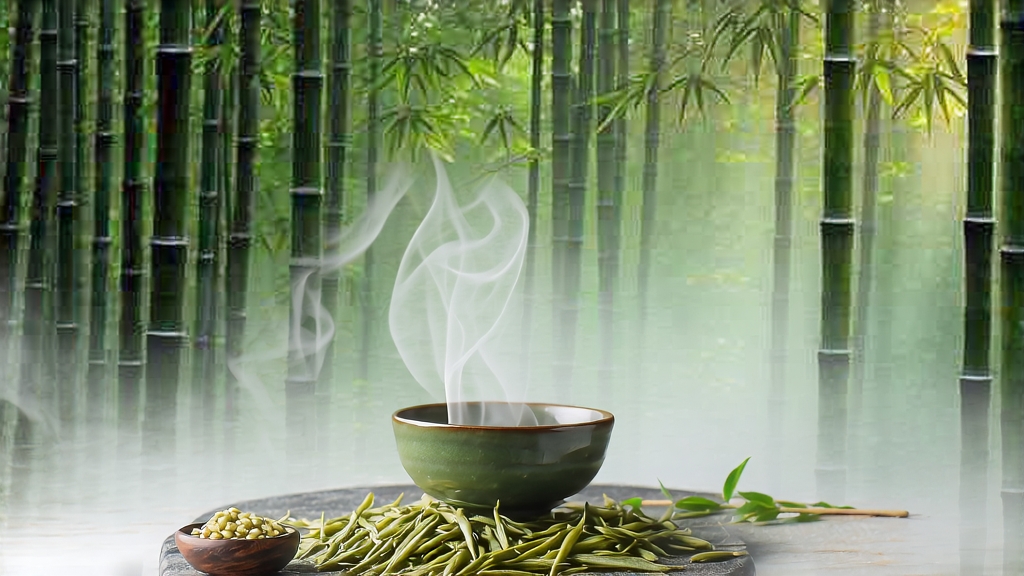
Tucked high on Meng Ding Mountain, where Sichuan’s mist never quite lifts above the bamboo ridges, a tea once reserved for emperors still grows beneath ancient evergreens. Meng Ding Huang Ya—“the yellow bud from the summit of Meng”—is the least-known yet most aristocratic member of China’s yellow-tea family. While green tea dominates export statistics and pu-erh fills auction headlines, yellow tea remains a quiet scholar, its craft so labor-intensive that only a handful of villages still possess the patience to make it. To understand Meng Ding Huang Ya is to witness a six-hundred-year dialogue between humidity and human breath, between the slow chemistry of leaf enzymes and the swift judgment of a tea master’s palm.
Historical whispers
The first written record appears in 1541, when a Ming-dynasty gazetteer notes “imperial carriages halting at Ya’an to await the spring bud.” By the Qing, the tea had become so coveted that county magistrates sealed the mountain passes during harvest, allowing only bud-pluckers and Buddhist monks to enter. Legend claims that the Kangxi Emperor, after tasting the liquor’s bright apricot color, decreed that every bud must face Beijing before sunrise—an apocryphal story, yet one that hints at the tea’s luminous reputation. When railway lines bypassed the region in the early twentieth century, Meng Ding Huang Ya retreated into local memory, saved from extinction only because a few families continued to yellow the leaves in wicker baskets hung above kitchen stoves.
Micro-terroir
Meng Ding Mountain, at 1 450 m, rises through three cloud belts a day. The temperature swing between dawn (8 °C) and noon (24 °C) shocks the tea bush into producing extra theanine, the amino acid responsible for the variety’s hallmark sweetness. Soils are yellow-brown laterite rich in kaolin, porous enough to drain monsoon rains yet retentive enough to feed the roots a steady trickle of minerals. The indigenous cultivar, known locally as “xiao-ye zhong” (small-leaf stock), keeps its buds hairy and tight, ideal for the successive wrapping that defines yellow tea.
Pluck and patience
Harvest opens on the first day after the Qingming festival, when two leaves and a bud stand exactly 2.8 cm long—measurement still done with a bamboo ruler carved by grandfathers. No fingernails are allowed; twigs are snapped sideways so the stem remains hollow, a detail that later helps the “men huang” or sealed yellowing stage. A kilo of finished tea demands between 42 000 and 48 000 such snips, all carried down the slope in wicker back-baskets lined with fresh banana leaves to prevent bruising.
Craft: the four breaths
- Sha Qing (Kill-Green) – Buds are tossed into woks heated to 180 °C for 90 seconds, just long enough to silence the grassy enzymes while preserving a core of moisture. The master listens for the change from crackle to muffled sigh, a sound locals call “the leaf’s first breath.”
- Re-wrap (Men Huang) – Immediately after woking, the hot leaves are piled 8 cm deep inside linen sacks and slid into a bamboo chamber kept at 32 °C and 75 % humidity. Every 40 minutes the pile is fluffed, then rewrapped, repeating six times across five hours. During this slow asphyxiation the edges of each leaf oxidize microscopically, turning ochre while the veins stay green—yellow tea’s signature “two-tone” leaf.
- Low-temperature bake – The half-yellowed buds are now dried at 60 °C on charcoal ash-covered braziers, a step that caramelizes residual sugars and fixes the nutty aroma. Timing is judged by aroma alone: when the scent shifts from fresh corn to toasted sesame, the tray is whisked away.
- Final rest – The tea is left for three nights in unglazed clay jars so that remaining moisture migrates evenly outward. Only then does the leaf pass inspection: a true Meng Ding Huang Ya must snap cleanly and reveal fibers the color of wheat straw.
Leaf anatomy
Dry, the buds resemble tiny spears: golden down covers a jade spine, and the tip curves like a carp’s tail. Once wet, they stand upright in the gaiwan, slowly sinking in unison—a choreography known as “the three bows of Meng,” interpreted